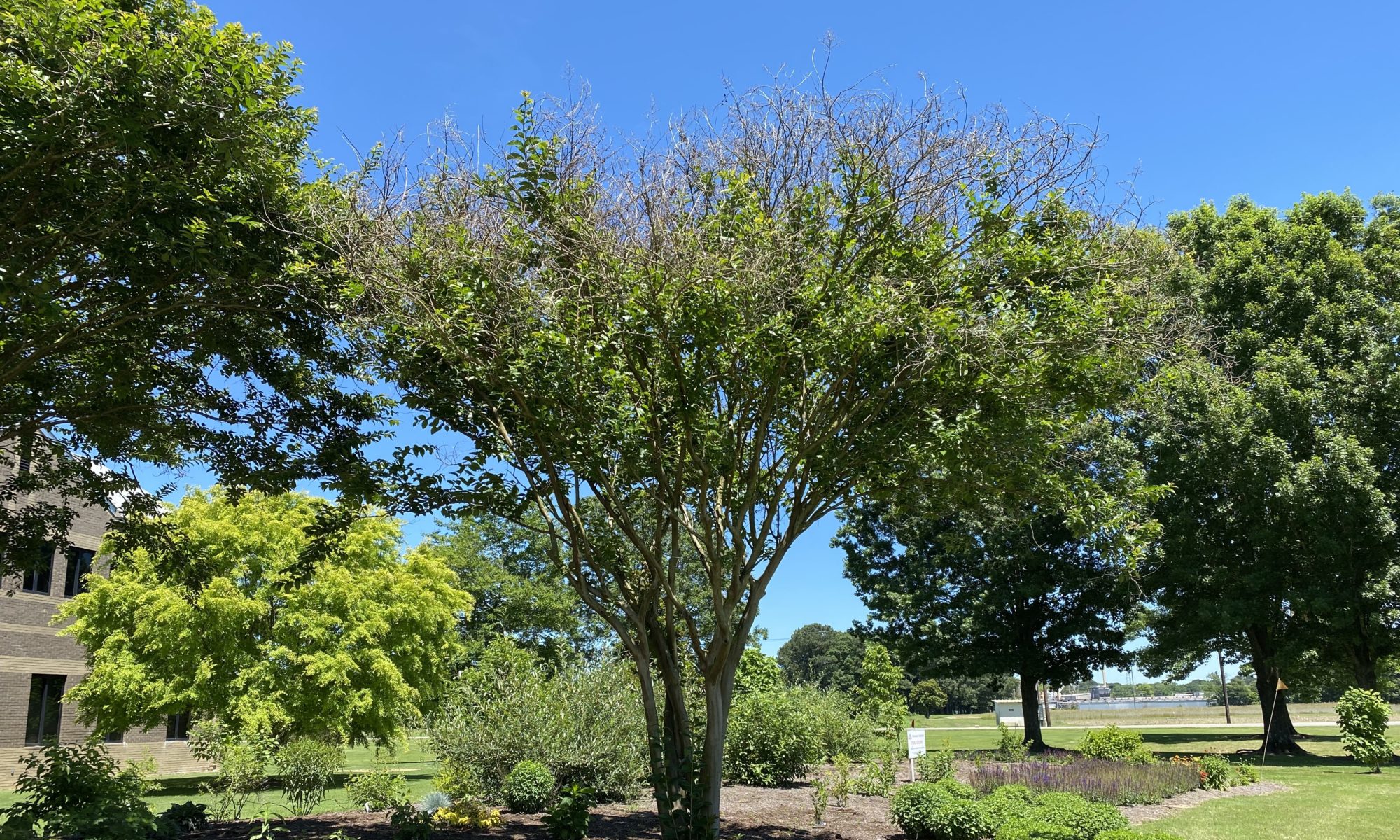
UT Extension Horticulture Expert Carol Reese Weighs in on Proper Steps for Saving Damaged Plants
JACKSON, Tenn. – Many crapemyrtles are suffering mightily this spring due to last year’s hot fall weather suddenly giving way to a series of nights that dipped into the teens. These usually durable plants had no time to gradually acclimate to the unusually early and severely cold temperatures, says Carol Reese, the University of Tennessee Extension Western Region horticulture specialist. “Adding insult to injury, many crapemyrtles had pushed out new growth this spring when they were cruelly subjected to a hard frost that killed those shoots.”
Reese says some crapemyrtles are valiantly pushing out new growth again, though perhaps in a ragged and unpredictable fashion, while others were killed to the roots and are flushing from the ground. So, what’s a homeowner to do to save their plants?
Research at the UT Gardens tells us to first, be patient. According to Reese, a few weeks of warm weather will tell the tale of where a plant is regenerating, if at all. “If it seems completely dead, try pulling back the mulch or soil a bit to let sunlight strike more of the root flare. This may stimulate shoot production if those roots are still alive. A scratch with a knife can reveal if there is any green cambium that indicates life and can even help to initiate bud formation,” Reese says.
“As far as the crapemyrtles with resprouting high on limbs, if there is a generous amount, you may elect to do nothing and the new growth will slowly conceal the dead portions, which will eventually shed on its own. You may also find excessive shoot growth from base or trunks from damaged trees that detract from the shapely trunks, and you may elect to remove those,” Reese says. “’Limbing up’ a crapemyrtle can reshape a plant into a beautifully tree-formed plant that many prefer.”
Reese has additional advice if it appears a plant’s growth is so irregular and spotty that the trees will be raggedy in appearance for years to come. “You may elect to start it over, by cutting it down close to the ground to let it flush stems from that base. These stems can grow very quickly if they have a well-established root system to push them along and will often be well over your head again by fall. Supplemental water during dry times can also be beneficial to this lush new growth. Don’t be tempted to fertilize, as this could stress an already stressed plant,” she recommends.
“Let these new shoots grow freely the first year, as the plentiful foliage will supply photosynthate to replenish the plant’s lost reserves and help it overcome the depletions of multiple events of freeze damage. Some of the stems will be dominant, and you can evaluate which are likely to be good candidates for forming the replacement trunks by their vigor and also their position for composing a well-balanced multi-stem tree.”
Reese’s primer on crapemyrtle growth continues with this explanation of next steps for saving damaged crapemyrtles. “New growth begins from epicormic buds that usually lie dormant just beneath the bark. They are normally suppressed by hormones produced in the actively growing shoots, until damage to the top of the tree galvanizes them into growth. These shoots will be very succulent at first and have a very shallow and fragile attachment to the old trunk. They can snap off very easily, making them subject to damage from a frolicking pet, hail, or wind gusts. Leaving numerous shoots for at least one growing season is insurance that you will have several options to choose from when it is time to begin selecting the ones for the new trunks.”
Reese says a good time to start this part of the re-training process would be late winter, just before new growth is initiated and it will be easier to see which stems are the better choices. “Cut off the undesired ones close to their origins but not so close that you damage any small bulge where it originated, as this judicious placement of the cut will help it to heal over and reduce the numbers of new shoots likely to emanate from the same site. Continue to remove unwanted shoots as fast as they appear.” Reese adds that this process may need to continue for a couple of years or more. “A light dressing of coarse mulch to prevent sunlight from striking the newly pruned areas will help to reduce the numbers of new shoots but do not bury the base of the trunk in mulch.”
Finally, Reese says that as new trunks begin to attain some stature, you may begin to remove lower growth that emanates from them up to a comfortable overhead height. “Don’t overdo it,” she warns. “It is best to retain a generous amount of leafy growth to supply the photosynthate needed for regrowth. A good rule of thumb for removal of lower limbs from any growing tree is to keep at least the upper two thirds of canopy for a good balance of foliage to tree mass.”
Many concerned gardeners have also noticed a blackening of the limbs on their crapemyrtles and may not be aware of the increasing spread of a pest that targets these beloved landscape plants. The good news is that crapemyrtle bark scale can be readily identified and effectively treated. The Madison County Master Gardeners, UT Extension horticulture agent Celeste Scott and UT Gardens, Jackson, curator Jason Reeves have developed a comprehensive guide for identifying and controlling this insect. It includes a step-by-step guide on products and treatments.
For more information call or email your local UT Extension office and check out online resources at UTHort.com.
Through its land-grant mission of research, teaching and extension, the University of Tennessee Institute of Agriculture touches lives and provides Real. Life. Solutions. utia.tennessee.edu.